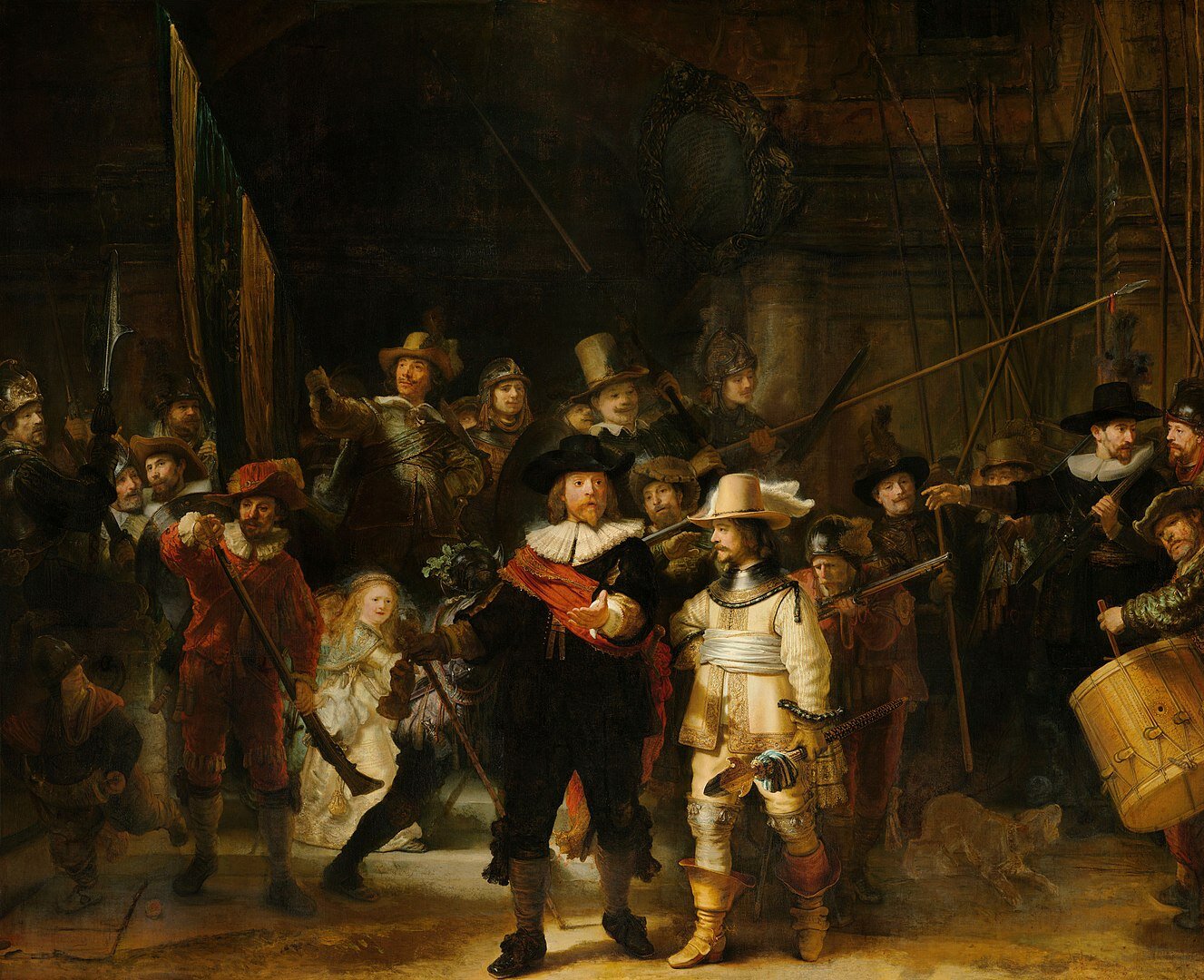THE NIGHT WATCH
BY REMBRANDT
I make no excuse for returning to Rembrandt for my latest Painting of the Week. The so-called Night Watch is a wonderful work of art and infinitely interesting. Naturally it is best seen in situ – in the Rijksmuseum. It is too large to travel (3.6m by 4.4m) and I can’t imagine them lending it anyway. Most of us, however, will encounter it in an image that may be the size of the one you can see here. Such an image is tiny in comparison to the real thing and it is so easy to skim over the image and certainly miss many, many details. So, as always, I urge you to take a slow, careful look. Get a magnifying glass or even use the camera on your phone and enlarge the photos to see the details.
And when you do, the questions will arise.
Briefly, the history: it is called The Night Watch now but was painted in 1642 as The Company of Frans Banning Cocq and Willem van Ruytenburch. Cocq and Ruytenburgh are the two main characters at the front. They were part of a citizen militia in Amsterdam and wanted something bold to decorate their meeting hall. These militias were responsible for guarding city gates, officiating at royal marches, minor policing, and so on. Naturally, though, they had a high regard for themselves. The name plate on the painting shows that 18 of this militia paid to have their faces immortalized by the leading Dutch painter of the time. They paid 1600 florins in 1640 and Rembrandt must have felt top of the world. (It wasn’t to last).
The more you paid, the bigger your role and the more elaborate your costume. Whether this was Rembrandt’s idea or not, I don’t know, but this is product placement par excellence. I imagine each in turn coming to his studio to allow him to capture their resemblance which he then transferred in the most appropriate way possible to the canvas. Now, a more traditional approach would have been to just line them all up in two or three rows (like a school or college photo) but this is Rembrandt we are discussing and nothing could have been further from his intentions.
Look closely and there are some strange inclusions. The young girl, for example, in the unnatural light. What is she doing in the midst of all this noise and fuss? As an aside she has the face of Rembrandt’s wife. She must be a mascot and the chicken hanging from her arm is plausibly a pun on the name Cocq. Look at the muskets – in various stages of use. And that jumbled mass of pikes, suggesting a slightly amateur, hurried nature of these civilian-soldiers. A little like Dad’s Army perhaps? Some characters are beautifully dressed and centre-stage; others are barely visible. And look carefully – you might even see Rembrandt himself peeking through the crowd… (At the back, one eye visible). It’s a noisy picture too – drums, shouting, clanking and scraping. It’s fantastic: so full of life, humour and drama. Take a step back for a second and remember that this began as a blank canvas, some brushes, some pigments and oil.
* * *



